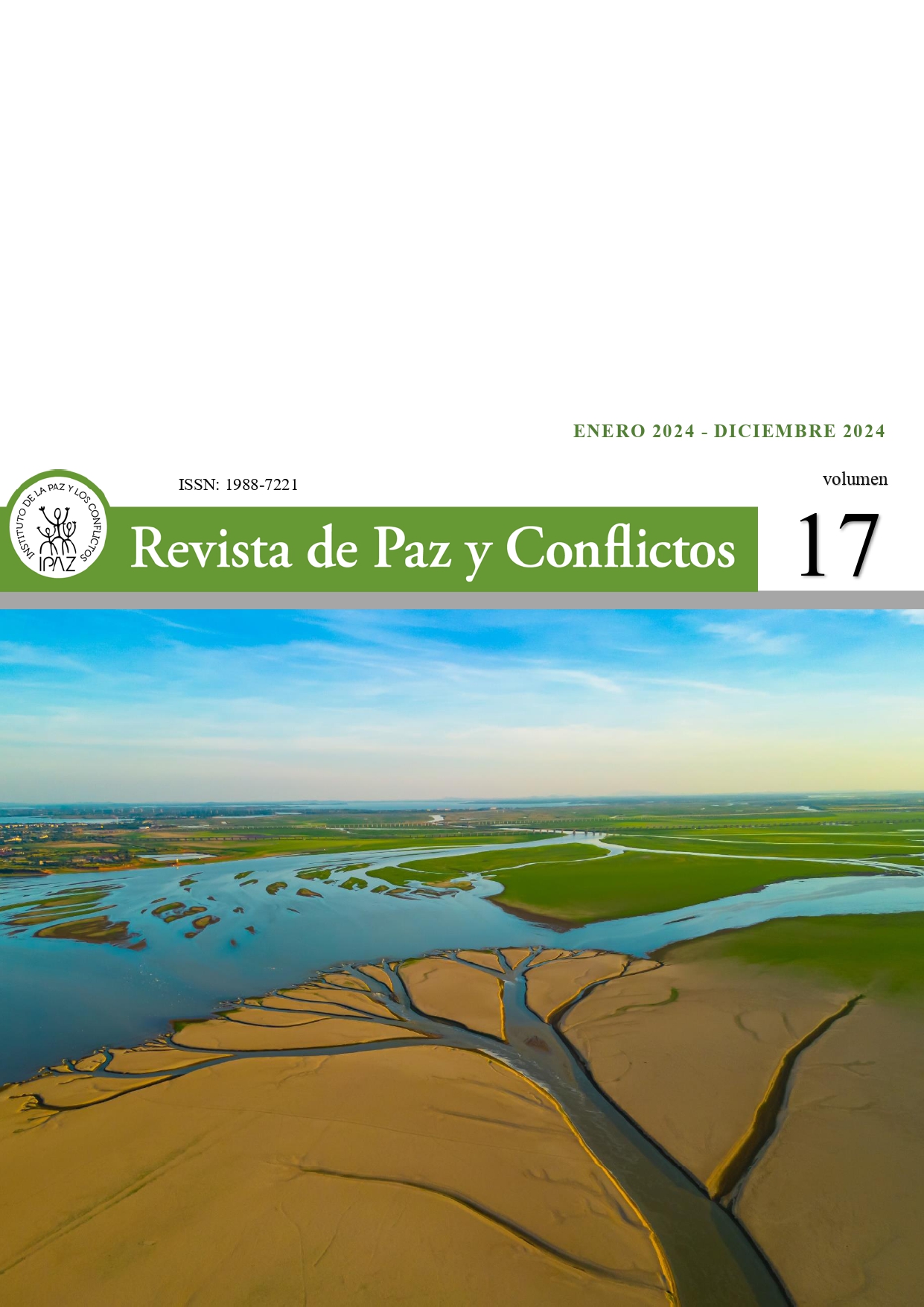War or peace? The Possibilities of Armed Conflict in the U.S.-China Rivalry
DOI:
https://doi.org/10.30827/revpaz.17.31666Palabras clave:
U.S.-China rivalry, armed conflict, great power competition, war prevention, strategic stability, deterrence, conflict scenariosResumen
This study critically examines the possibilities of armed conflict arising from the U.S.-China rivalry, addressing the central question: Will the current great power competition lead to war, or can peace be maintained? Through an analysis of three potential conflict scenarios—skirmishes over disputed territories, a Chinese invasion of Taiwan, and a Chinese blockade of Taiwan—the research evaluates the likelihood of armed confrontation, the factors that could precipitate or prevent conflict, and the potential consequences of military engagement. By integrating established international relations theories with contemporary strategic assessments, the study provides insights into the delicate balance between war and peace in this crucial bilateral relationship. The research concludes with an assessment of the conditions under which peace might be preserved and offers policy recommendations aimed at conflict prevention and strategic stability.
Descargas
Citas
Allison, G. (2017). Destined for War: Can America and China Escape Thucydides' Trap?. Houghton Mifflin Harcourt.
Brands, H. (2022). The Twilight of American Strategy. Yale University Press.
Christensen, T. J. (2015). The China Challenge: Shaping the Choices of a Rising Power. W.W. Norton & Company.
Cohen, R. S., Treyger, E., & Curriden, C. (2021). Great-Power Competition and Conflict in the 21st Century Outside the Indo-Pacific and Europe. RAND Corporation.
Farrell, H., & Newman, A. L. (2019). Weaponized Interdependence: How Global Economic Networks Shape State Coercion. International Security, 44(1), 42-79.
Friedberg, A. L. (2018). Competing with China. Survival, 60(3), 7-64.
Gilpin, R. (1981). War and Change in World Politics. Cambridge University Press.
Heath, T., & Thompson, W. R. (2020). Great Power Rivalry in a Changing International Order. RAND Corporation.
Ikenberry, G. J. (2011). Liberal Leviathan: The Origins, Crisis, and Transformation of the American World Order. Princeton University Press.
Jervis, R. (1978). Cooperation Under the Security Dilemma. World Politics, 30(2), 167-214.
Kaplan, R. D. (2012). The Revenge of Geography: What the Map Tells Us About Coming Conflicts and the Battle Against Fate. Random House.
Kissinger, H. (2014). World Order. Penguin Press.
Kupchan, C.A. (2020). Isolationism: A History of America's Efforts to Shield Itself from the World. Oxford University Press.
Mazarr, M. J. (2022). Understanding Competition: Great Power Rivalry in a Changing International Order. RAND Corporation.
Mearsheimer, J. J. (2014). The Tragedy of Great Power Politics. W.W. Norton & Company.
Nye, J. S. (2017). Is the American Century Over?. Polity Press.
Organski, A.F.K., & Kugler, J. (1980). The War Ledger. University of Chicago Press.
Sagan, S. D., & Waltz, K. N. (2012). The Spread of Nuclear Weapons: A Debate Renewed. W.W. Norton & Company.
Schake, K. (2017). Safe Passage: The Transition from British to American Hegemony. Harvard University Press.
Schelling, T. C. (1966). Arms and influence. Yale University Press.
Tammen, R., & Kugler, J. (2001). Power Transitions: Strategies for the 21st Century. Chatham House Publishers.
Waltz, K. N. (1979). Theory of International Politics. Addison-Wesley.
Zhang, Y., & Chen, H.-C. (2023). U.S.-China Relations and the Future of Global Order. Asian Security Studies Journal.
Descargas
Publicado
Cómo citar
Número
Sección
Licencia
Derechos de autor 2025 Revista de Paz y Conflictos

Esta obra está bajo una licencia internacional Creative Commons Atribución 4.0.
Esta obra está bajo una licencia internacional Creative Commons Atribución 4.0.














